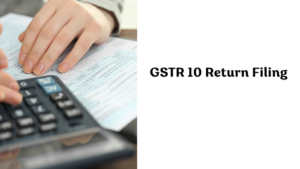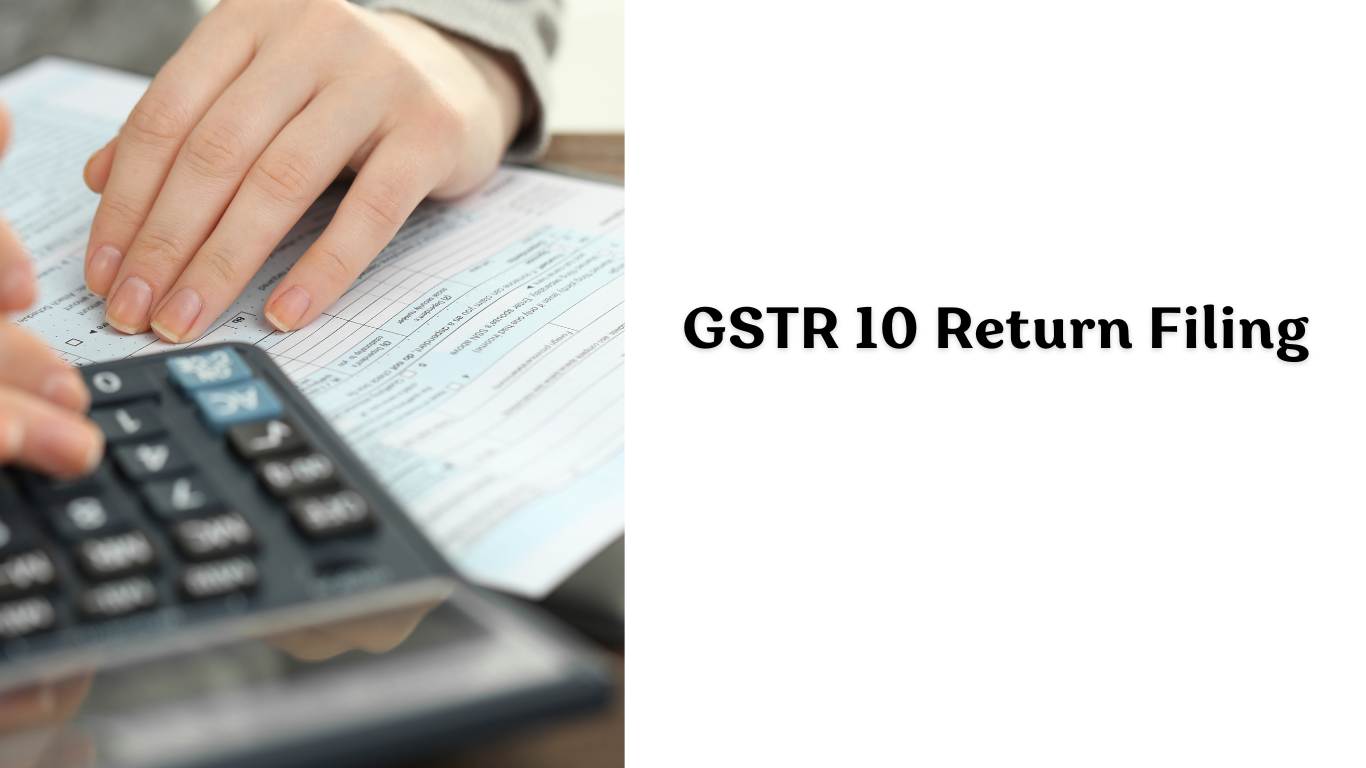GSTR 10 Return Filing
GSTR 10 Return Filing that registered taxable individuals must file when they choose to cancel their GST registration. When a taxable person opts for GST registration cancellation, they are required to submit a final return under GST law using the GSTR-10 form within a period of three months. This article provides a comprehensive overview of all aspects related to GSTR-10.
What is the GSTR-10?

GSTR-10 is a return that must be filed by a taxable individual whose GST registration has been cancelled or surrendered. This return, also known as a final return, is submitted in the form of GSTR-10.
GSTR-10 due date: When is GSTR 10 due?
The due date for filing GSTR-10 is within three months from the date of cancellation or the date of cancellation order, whichever is later.
For example, if a business’s GST registration is cancelled on April 1, 2024, and they receive the cancellation order on April 5, 2024, they must file GSTR-10 by August 5, 2024.
GSTR-10 applicability: Who should file GSTR-10?
GSTR-10 should be filed only by individuals whose registration under GST has been cancelled or surrendered. However, certain categories of GST taxpayers are exempt from filing GSTR-10. These include:
- Input Service Distributors (ISD)
- Taxpayers under the composition scheme
- Non-Resident Taxable Persons (NRTP)
- Individuals required to deduct TDS under Section 51 of the CGST Act
- Individuals required to collect TCS at source under Section 52 of the CGST Act
Details to be provided in GSTR-10
Here are the details to be provided in GSTR-10: Auto-populated sections:
- GSTIN
- Legal Name
- Business or Trade Name
- Address for any future correspondence
Sections requiring information:
- Effective Date of Surrender/Cancellation: Mention the date of cancellation of GST registration as stated in the cancellation order.
- Reference number of Cancellation order: Unique ID provided by authorities upon cancellation order issuance.
- Date of Cancellation Order: Date of issuance of the GST registration cancellation order by authorities.
- Particulars of Closing Stock: Details of closing stock at the time of business cessation, including:
- Inputs in stock (with invoice present)
- Inputs in stock of semi-finished or finished goods (with invoice present)
- Capital goods or machinery in stock
- Inputs in stock or in stock of semi-finished or finished goods (without invoice)
- Tax payable amount and tax paid: GSTR 10 Return Filing Provide details of ITC reversal or tax payable and paid, and transfer from electronic cash and credit ledgers under CGST, SGST, IGST, and Cess. GSTR 10 Return Filing
- Interest, late fee payable and paid: Breakdown of interest and late fee payable and paid for each head.
- Verification: Confirm the correctness of GSTR-10 particulars.
Once all details are accurately provided, the taxpayer must digitally sign the return using either a digital signature certificate (DSC) or Aadhaar-based signature verification for authentication.
What is the penalty for not filing GSTR 10?
Failure to file GSTR-10 within the due date will result in a notice being sent to the registered person. They will have 15 days to file the return along with all required documents. If the person still fails to file the return within this period, GSTR 10 Return Filing the tax officer will issue a final order for cancellation, specifying the amount of tax payable along with any applicable interest or penalty.
What is the difference between a final return and an annual return?
The main difference between a final return and an annual return lies in their applicability and purpose:
- Annual Return (GSTR-9):
- Applicability: Every registered person paying tax as a normal taxpayer under GST is required to file an annual return.
- Frequency: Annual return is filed once a year.
- Form: Annual return is filed in Form GSTR-9.
- Purpose: The annual return provides a summary of all transactions undertaken during the financial year.
- Final Return (GSTR-10):
- Applicability: Final return is filed by individuals whose GST registration has been cancelled or surrendered.
- Frequency: Final return is filed only once, upon cancellation or surrender of GST registration.
- Form: Final return is filed in Form GSTR-10.
- Purpose: The final return marks the conclusion of GST registration and requires disclosure of closing stock details and tax liabilities upon cancellation or surrender of registration.
In summary, while an annual return is filed annually by all normal taxpayers under GST, a final return is filed only once by individuals whose GST registration has been cancelled or surrendered.
Conclusion:-
In conclusion, GSTR-10 is a final return that must be filed by individuals whose GST registration has been cancelled or surrendered. It should be filed within three months from the date of cancellation or the date of cancellation order, whichever is later. GSTR 10 Return Filing The return includes various details such as the effective date of surrender/cancellation, reference number of cancellation order, particulars of closing stock, tax payable amount, and interest or late fees payable.
Failure to file GSTR-10 within the due date may result in penalties imposed by tax authorities. GSTR 10 Return Filing It’s important to distinguish GSTR-10 from the annual return (GSTR-9), which is filed annually by all normal taxpayers under GST. GSTR 10 Return Filing While GSTR-9 provides a summary of transactions for the financial year, GSTR-10 marks the conclusion of GST registration for individuals who have cancelled or surrendered their registration.
Sources : https://cleartax.in/s/gstr-10-gst-final-return
For More Information : https://taxgyany.com/

